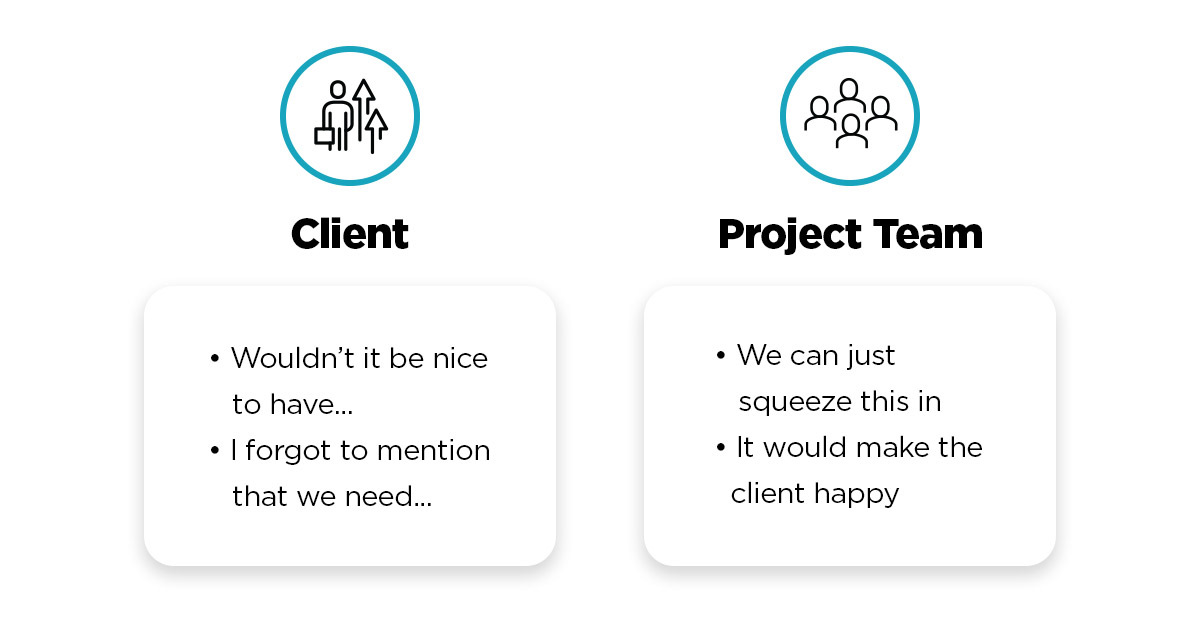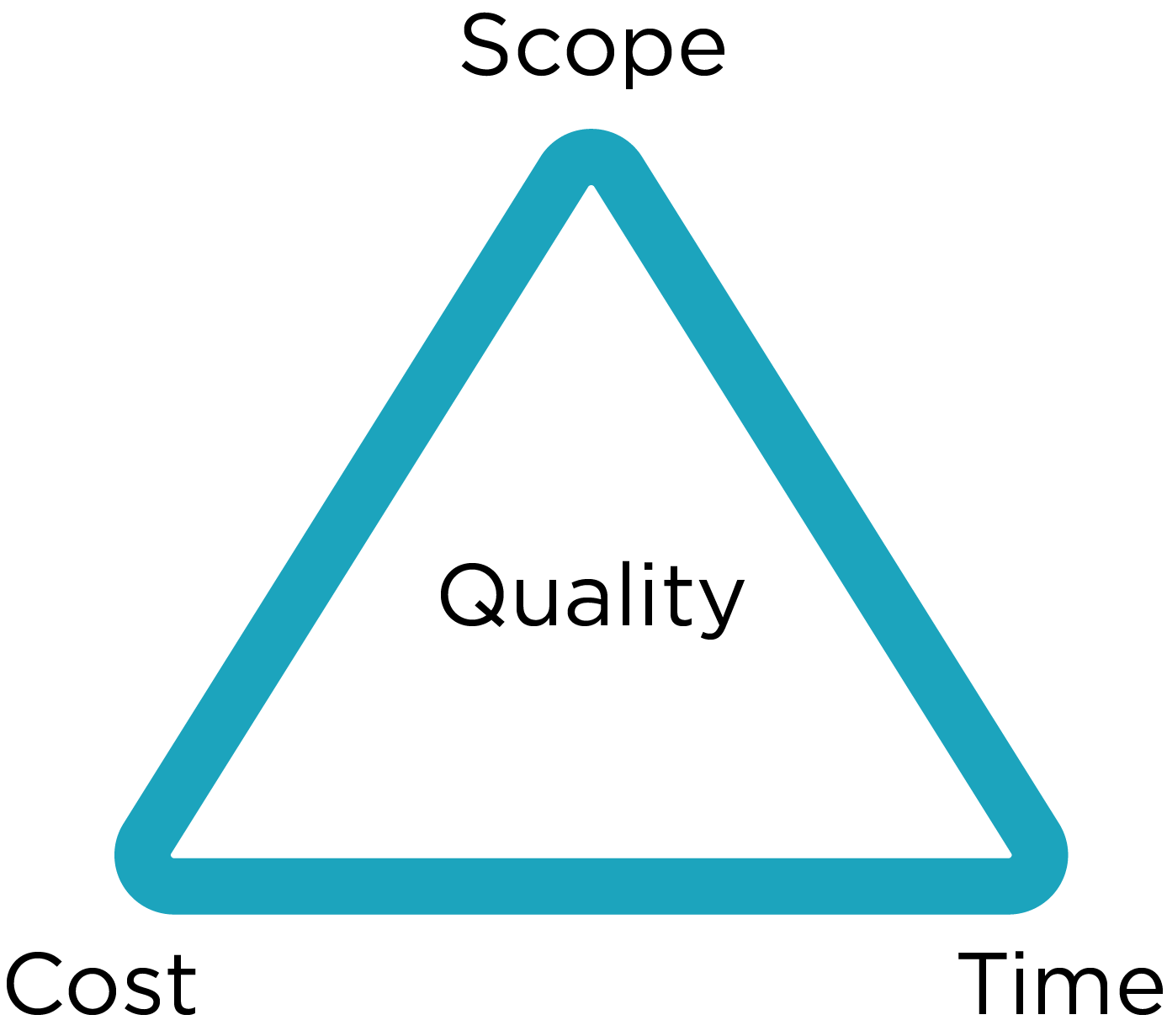
Scope creep. Are we referring to changes lurking around the corner, trying to sneak up on you? Well, sort of!
In project management, when we say “scope”, we refer to the agreed upon work that is to be completed as part of a certain mandate (or, project). Scope creep occurs when changes squeeze their way into the project on top of the original deliverables, without any involved party taking into consideration the impacts it’ll have on time, budget, or even resources.
You might think to yourself though, “Wait; sneaking in extra work under the radar? What’s so bad about that?”
Let’s take a deeper look at scope creep, and what it might mean for you and your project.
Request More Info From an Expert
Causes of Scope Creep
There’s always two sides to every story. Here’s what we see frequently in regards to scope creep:

And generally speaking, change is okay! After all, change is why you’re executing a project, or implementing a new system.
The issues with scope creep & moving fast occur when the changes being brought on ignore the other pillars of your project (namely, time & budget, where quality suffers as a result).

When new changes are brought on, it might feel like a quick win to squeeze one of the changes in, maybe two, maybe three… but before you know it, all these sneaky changes have made their way into the project! Is the project still on track? Is the project still on budget?
The issue with scope creep, is that it becomes increasingly difficult (on both the client, and delivery side) to manage the after effects of allowing all these changes. Now as a client, you’re dissatisfied because “how could I know the project was off track?” and on the delivery side, your team is overworked trying to cram in every last detail.
So, how do we stop it, or better manage it?
Managing Scope Creep
Tracking Changes
Throughout a project, it is invaluable to keep track of a Change Request Register, or Change Request Tracker. This type of document doesn’t need to be complicated, but will help the project team and the client better understand what the impacts of changes are.

It may seem tedious to track every single request that comes in, especially when “it’s just so quick, can we add it in?” But one task can quickly spiral into twenty tasks, and before you know it, it’s already out of control. Client and project team alike should work together to determine what threshold you are both comfortable with (i.e. formally track tasks over a certain amount of hours to implement, or with certain types of impact).
Dealing with Moving Fast
It can be tempting sometimes to simply “get the ball rolling” on a project, and decide what the scope will be later. In a fast moving world, this is becoming even more apparent. However, the costs and benefits need to be considered:
- Are you willing to dive into a project without knowing how much you’re going to end up spending, or what you’re going to get?
- How much time is too much time spent defining requirements? (keep an eye out for our upcoming post on how to have a successful assessment)
To compete in fast paced worlds, an often overlooked approach for managing scope creep is iteratively approaching your project, and its requirements. Instead of setting out to have all the bells and whistles (many of which, you may not even know exist or are possible), start with a small, well defined set of objectives, and once these are completed, seek feedback on how you can improve from the current state of things and use the feedback as a driver for new requirements.
Responsibilities & Involvement
Everyone involved in the project should be keenly aware of their deliverables. If a new request or idea comes in, there are a few steps to take:
1. Are project management, and client-side stakeholders aware?
- Project managers are the gatekeepers of scope creep, but they can only fill this role if they’re made aware it’s happening!
- Client stakeholders need to be made aware of changes, so that they can approve (or reject) them
2. Is the new request well defined?
- It is critical for the client to be involved in the definition of of their requests; the project delivery team can certainly help here, but ultimately changes should be driven by client-side stakeholders
3. Does the change fit in with the goals & objectives?
- If yes, evaluate it as a change request. If no, consider tracking it in a backlog for a future phase
Request More Info From an Expert
